Alternative proteins: Feed from sustainable cycles
)
Plants, algae or upcycling: Inhouse Farming – Feed & Food Show 2024 outlines new paths for agriculture – 12-15 November in Hanover, Germany
The second edition of the Inhouse Farming – Feed & Food Show will take place this year from 12 to 15 November, serving as a platform for self-contained agricultural and food systems of the future, held in parallel with EuroTier 2024 in Hanover, Germany. One topic highlight will be the use of alternative protein sources such as animal feed. However, only a few of the raw materials of non-animal origin under consideration are suitable for indoor cultivation. In practice, algae have been the most convincing so far.
Peas, lupins and beans are domestic protein crops that could replace imported feedstuffs such as soy in the medium term. However, they are currently not economically and ecologically attractive for indoor farming in Northern Europe, as outdoor cultivation is the more economically viable alternative. Algae, on the other hand, are ideally suited for protein production with indoor systems. Nils Borchard, Head of Research and Innovation at the DLG’s Center for Agriculture, sees the benefits primarily in the more effective use of by-products and residues: “Indoor approaches become interesting when it comes to the use and refinement of by-products and residues from food production. Various innovative approaches are being tested here in order to achieve upcycling. For example, algae can be used to produce high-quality proteins or oils to enrich animal feed.”
First algae production plants already in operation
Algae have been included in the “positive list for straight feeding stuffs” and can be used accordingly. In addition to the algae cultivation plant, only water, light and nutrients are required. The ecological footprint is strongly determined by the use of renewable energies. Even if this type of feed production is not yet widespread, some companies and research projects are working very specifically on this topic and have put the first plants into operation.
Jörg Ullmann, member of the recently founded DLG committee “New Feed and Food”, has been successfully using microalgae farming for two decades and, together with Algenfarm Klötze GmbH & Co. KG, has been successfully cultivating microalgae for twenty years. He is convinced that the importance of algae protein will also increase in animal feed. “The optimization of suitable algae strains, the implementation of technological innovations and scaling up to very large algae farms will be among the keys to this,” says Ullmann. “The ability to grow algae proteins independently of arable land and without the use of pesticides and too much reliance on the weather are important. Climate-resilience is a key word here, which means grow close to where they are consumed with short transportation routes. These are additional arguments for the expansion of an algae industry.”
With the ‘EU4Algae project’ and the ‘Algae for feed’ working group, the topic is prominently anchored in the EU Commission’s ‘Maritime Forum’. In addition to knowledge exchange and start-up support, the focus there is also on accompanying topics such as training, market access and viable business models.

